“The Zentangle Method™ is an easy-to-learn, relaxing and fun way to create beautiful images by drawing structured patterns called tangles.”
This is a collection of Zentangle®-related terms for inquiring minds. Although TanglePatterns is not affiliated with the official zentangle.com site, I am a Certified Zentangle Teacher (CZT).
Unless noted otherwise definitions italicized and in quotation marks are from the official Zentangle website or from the Zentangle PRIMER Vol 1.
If you haven’t read this page on the Theory of Zentangle please do!
As Sandy Steen Bartholomew reminds us in her AlphaTangle: A Truly Tangled Alphabet: TIP: Zentangle is a noun, not a verb. Don’t say “I Zentangled my bathroom floor.” Say “I tangled my bathroom floor.” Other things to say: “I need to create a Zentangle, right now!” “Sorry, I didn’t hear you. I was busy tangling.”
Same goes for “Zentangling”. The correct terms are tangling, or tangled.
Anchored (Tethered) Auras
Auras that are “tethered” at each end. From Project Pack #15, Day 4 video at 04:14.
A tangle enhancer where a stroke is drawn inside or outside a prior stroke following the shape of that original stroke. Other tangle enhancers include Coffering, Dewdrop, Enthatching, Perfs, Rounding, Sparkle, Shading and Weighting.
“In the Zentangle Method, a line tracing around the outside or inside of a tangle is called an aura.“
In this post on the Zentangle blog, Maria explores a wide variety of creative aura-ing possibilities.
CZT Adele Bruno has written more about “The Awesome Art of Aura” here on her blog.
“Bijou’s thoughts about the Zentangle Method (and life).” Here’s the list of all the Bijouisms.
One of the first steps in creating a Zentangle®. A border starts with a lightly penciled dot placed in each corner of the tile. Then a lightly-penciled line connects the dots near the edges of the tile to frame the string and its contents. An example of a border can be seen on this page.
From the Chinese “chop signature”, originally in the form of a seal or stamp. In Zentangle, when we finish a Zentangle tile one of the final steps before dating and signing the back of the tile is adding a small chop usually made up of our initials. Below is an example of Maria’s chop on the lower right of a Project Pack tile:
Coffered Tangles, also Coffering
A tangle enhancer. Other tangle enhancers include Aura, Dewdrop, Enthatching, Perfs, Rounding, Sparkle, Shading and Weighting. From the Zentangle Mosaic app, January 2019. Maria introduces coffered tangles noting:
“I use this technique often, when a tangle needs a bit more detail. … ‘coffer’ (noun). Also called caisson, lacunar. In architecture, one of a number of sunken panels, usually square or octagonal in a vault, ceiling or soffit. You can google ‘coffered ceilings’ to get an idea what they look like. …
I like to coffer (verb?) Hollibaugh. All you do is aura inside the shapes between the random boards in your tangle, then connect the corners, shape to shape. … Just make sure there’s enough room to fit the inner aura.“
Dex is another good example of a coffered tangle.
Maria demonstrates coffering in in Project Pack #7, Day 12. “You create an inner aura within a space of a tangle and then connect the corners to the tangle it is within.“
Also called bidirectional shading. A term coined by CZT Lynn Mead and taught in a CZT workshop. This technique is demonstrated by Maria in Project Pack #25 on Day 6 and Day 10, as illustrated below.
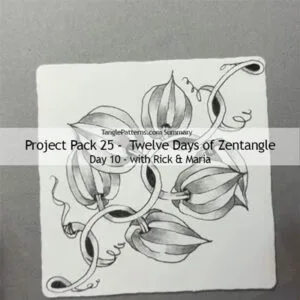
What you should know about using the term Zentangle® and using tangle patterns in teaching or your art, or creating products for sale. Read about it here on the ZENTANGLES > GUIDELINES FOR CREATING ZENTANGLE-INSPIRED ART AND PRODUCTS page.
Here’s a good article that explains copyright on the web in plain English. Just because something is on the web, it is not “public domain”.
The deconstructed steps-out (step-by-step illustrations) on TanglePatterns are copyright-protected. Feel free to refer to the images to recreate tangles in your personal Zentangles and ZIAs. However the artists and TanglePatterns.com reserve all rights to the images and they must not be pinned or otherwise reproduced or republished.
Certified Zentangle Teacher® – a designation earned by attending and successfully completing a certification seminar. You can also find out more about it and the seminar dates on the ZENTANGLES > TEACHING ZENTANGLE page here on TanglePatterns. In the USA, seminars are held in Providence, RI approximately twice each year and occasionally include online participation. Certification seminars are also held in Europe and Asia. Visit the official Zentangle® site for more information on becoming a CZT®.
“To reduce a pattern to its most elemental constituent strokes so a user of the Zentangle Method can recreate, or reconstitute, that pattern (tangle) by repeating those strokes one at a time in a structured sequence.“
A tangle enhancer. Other tangle enhancers include Aura, Coffering, Enthatching, Perfs, Rounding, Shading, Sparkle and Weighting. CZT Lynn Mead has posted a tutorial here. Zentangle spells it “dewdrop”, all one word. Maria explains dewdrop as “drawing a magnified version of a tangle within the same tangle.“
A technique introduced in April 2017 on the Zentangle Mosaic app, based on the typographic dingbat ornament.
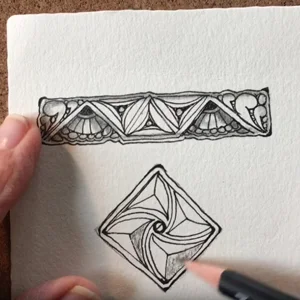
Dingbatz examples
A string technique introduced by the Zentangle folks at 1440 Multiversity in Santa Cruz, CA in September 2018. It starts with a large roundish frame using an Eke-shaped looping line. It is further embellished with auras, coffering, and filled with other tangles.
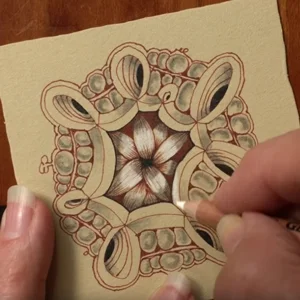
Click the link for the Kitchen Table Tangles video where Maria first demonstrates Dingsplatz online.
As part of the Accessing the Artist Within project pack, on Day 7 Maria tangles the Dingsplatz string technique with Purk and Printemps on the spread with the Thomas Merton quote, “Art enables us to find ourselves and lose ourselves at the same time.” (The full video is included on the Purk and Printemps pages.)
Similar to monotangle, a duotangle is a Zentangle tile composed of two tangles.
In deconstructing a tangle, “Usually the number of elemental strokes needed are 3 or less. Often, you only need one or two. By ‘elemental strokes’ we mean a dot, a straight(-ish) line, a curve (like a parenthesis), a reverse curve (like an ‘S’), and an orb or circle.“
For an ingenious example of these elemental strokes used together as a tangle, see CZT Mina Hsiao’s Dicso (not Disco!) tangle.
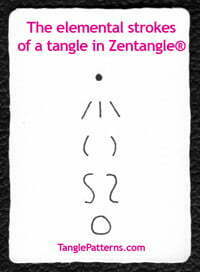
A technique introduced by Maria in a video in the Kitchen Table Tangles series. You can view the video here on TanglePatterns.
View the complete list of available KTT videos on the ZENTANGLES > ZENTANGLE KTT VIDEOS page on the top menu bar of any page on the site.
“A technique which can be added to, or combined with, many tangles.” Other tangle enhancers include Aura, Coffering, Dewdrop, Enthatching, Perfs, Rounding, Shading, Sparkle and Weighting.
A tangle enhancer. A playful term by Rick and Maria for a feathery hatching technique using fine strokes of the Micron pen to add shades or texture to a tangle. Introduced in the Day 3 of Twelve Days of Zentangle (December 2017) video, together with the tangle Rumpus. Other tangle enhancers include Aura, Coffering, Dewdrop, Perfs, Rounding, Shading, Sparkle and Weighting.
“A small pattern that you draw within the spaces of an ink-drawn reticula (grid).” In the past fragments have been referred to as grid seeds. (See Seeds definition below.) For a chart of some 50 “starter fragments” see the Zentangle® newsletter in the article Grid (Un)Locked.
Every grid-based tangle on this site is composed of a fragment, placed as CZT Lynn Mead describes here:
“Fragments are little chunks of patterns that when rotated or mirrored and placed together in a reticulum (framework) create a larger pattern. Think ceramic tiles. Each tile is a unit and when put together, the elements of each tile work together to create a larger pattern. Depending on the tile’s pattern and how the tiles are put together a number of different variations are possible.”
Genuses
See Tangle Genuses definition below.
Also called “pencil tangles”, they’re tangles drawn with a pencil and might appear as a reflection of a pen-drawn tangle or they might stand alone as part of a composition.
A Zentangle technique term introduced at zenAgain 2022. “Using the same principle as gardeners use to graft plants, we take a zentomological approach to graft tangles. By taking any tangle that begins with a stem, shape or space that allows a way for you to connect something to it, you can then join it to another tangle or tangle component starting with the same stem or shape proportion. These components can reference buds, berries, leaves, flowers and beyond. We refer to this process as grafting tangles and the components as organic fragments.“
Illuminated letters with tangles. Trademarked term owned by calligrapher and CZT Angie Vangalis.
“The small spaces between or within tangles.”
As of October 12, 2021 – the OFFICIAL name for a group of tangles (see also Penchant: a group of tanglers). Read all about the whys and wherefores on the Zentangle blog: The votes are in.
This term was suggested by Elizabeth W. and selected by Rick and Maria from all submissions on the post “What do you call a group of tangles?” .
KTT Videos (Kitchen Table Tangle)
In January 2017 Zentangle® added a new feature to their Zentangle Mosaic App, called Kitchen Table Tangle (KTT) videos.
Although most of the KTT videos are only available to the subscribers of the paid version of the app ($2.99/month, or $24.99/year), occasionally Zentangle makes a KTT video public and I also add it to TanglePatterns. View the complete list of available KTT videos on the ZENTANGLES > ZENTANGLE KTT VIDEOS page on the top menu bar of any page on the site.
A whimsical new member of the Zentangle family introduced in Project Pack 24, inspired by the ladybug shape forming the basis of Crescent Moon and also named in part for the essential aura tangle enhancer taught in that tangle and used throughout one’s Zentangle practice.
You can read Lady Aura’s introduction here on the Zentangle Blog and get the steps for drawing her.
Term introduced by Molly and Martha in Day 6 of Project Pack 15 where letters are used as strings for tangles.
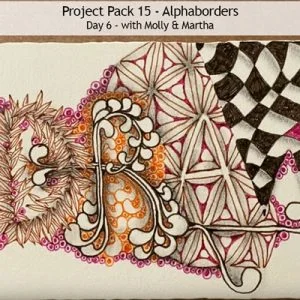
Map tangling is a Zentangle-inspired technique combining tangles drawn on colorful watercolor washes to create abstract or map-like shapes. The process involves substituting the traditional Zentangle string with irregular splotches of watercolor on a tile, allowing them to dry, and then filling in the colored spaces with tangles.
This ZIA technique results in colorful and detailed art pieces where the tangles are confined to the painted areas. The watercolor shapes often resemble continents, islands, or other map-like forms, which gives the technique its name.
“An image that results from drawing two or more tangles touching or near each other so their combination reveals a new pattern or shape.”
A completed Zentangle® composed entirely of a single tangle. Originated on iamthedivaczt.blogspot.com.
The Zentangle Mosaic app is available in the Apple Store for Apple devices, and on Google Play for Android devices.
The app is free to sign up and can be used with limited viewing abilities. By subscribing to the paid version ($2.99/mo or $24.99/year) subscribers to the Zentangle Mosaic have access to the following functionality:
-
-
- Ability to upload tiles and create mosaics
- Appreciate other users and tiles
- Comment on tiles and mosaics
- Access to “Tangles, Tips and Techniques,” “Kitchen Table Tangles,” and “Tangle Step Outs”
- View tiles at high resolution
-
Introduced at the April 2025 zenAgain CZT-only seminar, nomadz are “Free form fragments that cluster together organically.” They can “shine alone but play well in groups.”
Generally you’ll find these listed on TanglePatterns with the tag free-form.
A term referring to the technique used in tangling the Zentangle-original tangle ‘Nzeppel. After the initial grid/reticulum structure is in place, the next step involves carefully adding a stroke within each space that traces around the outline thus “squishing” an orb-like shape within.
The Zentangle-original tangles created and introduced by Zentangle® founders Rick Roberts, Maria Thomas, Maria’s daughters Molly Hollibaugh and Martha Huggins, and employee Nancy Sampson.
View the complete list of official tangles by going to ZENTANGLES > LINDA’S LIST OF OFFICIAL TANGLE PATTERNS on the top menu bar of any page.
“We wanted a word that described this shape’s essence (rather than ‘circle’) . . . so that everyone would understand this shape’s beauty is not its circular perfection, but its organic, full, nourishing, yielding and luscious roundness.”
A Tangle Genus introduced and defined at zenAgain 2022. “Tangles that grow and morph and fill a space much like a plant might. Organic tangles are curvy, wild, and grow in unexpected ways. Most, but not all organic tangles, are inspired by nature. Easily drawn without a string, these tangles meander in limitless directions.” Examples include Dewd, Flux, Hollis, Mooka, Pokeroot, Rixty, Toodles, Verdigogh and Zinger.
As of October 12, 2021 – the OFFICIAL name for a group of tanglers (see also Inspiration: a group of tangles). Read all about the whys and wherefores on the Zentangle blog: The votes are in.
This term was suggested by Carol L. and selected by Rick and Maria from all submissions on the post “What do you call a group of tangles?” .
A tangle enhancer consisting of tiny dots or orbs/circles used to fill or embellish spaces. Other tangle enhancers include Aura, Coffering, Dewdrop, Enthatching, Rounding, Shading, Sparkle and Weighting. Learn all about it from a CZT®. An example of Perfs can be seen here.
Introduced to the public on December 10, 2019, in Day 5 of Project Pack #07, where Maria’s daughter CZT Martha Huggins explains, “we’ve noticed this fragment filler kind of popping up in a lot of our work here lately and we’ve decided to call it peppering because it really resembles the tangle pepper“. Pepper is one of the 102 original “official” tangles.
Project Pack
See Zentangle Project Packs below.
Reticula (Reticulum = singular)
“Grids or other structures of ink-drawn lines that hold fragments.” Several pages of example reticula are given in the Zentangle PRIMER Vol 1.
CZT Lynn Mead describes reticula and fragments here:
“Reticula are simply frameworks in which to place pattern fragments. Fragments are little chunks of patterns that when rotated or mirrored and placed together in a reticulum (framework) create a larger pattern. Think ceramic tiles. Each tile is a unit and when put together, the elements of each tile work together to create a larger pattern. Depending on the tile’s pattern and how the tiles are put together a number of different variations are possible.”
The term I’ve used to describe tangles that can flow like a ribbon through your tile or around it like a border.
To describe tangles as “border” tangles seems to dictate their use as a frame, whereas “ribbon” indicates their flexibility.
This also avoid confusion with the term “border” which we use in the Zentangle Method™ as one of the first steps in creating a Zentangle®.
This type of tangle is sometimes described as “vining”, as it can wander like a vine around the tile.
Most all ribbon-style tangles can also serve as background or fill tangles by placing them side-by-side in columns or rows, depending on your “no up or down” perspective.
Likewise, most grid-based tangles can serve as ribbon-style tangles by using reticula in a single row/column.
A technique inspired by and named after a photograph taken in Rome by the late Zentangle employee Nancy Sampson, who tragically died before her time of ALS.
Romanancy is illustrated here on the Zentangle blog along with Maria’s explanation:
“I did not see it as a tangle per se, but as an exploration of wrapping tangles, border-like, over uneven surfaces.“
A tangle enhancer. Other tangle enhances include Aura, Coffering, Dewdrop, Enthatching, Perfs, Shading, Sparkle and Weighting. You can see an example of rounding here in Stage 2 of CZT Marizaan van Beek’s Shading tutorial. Compare the tile in Steps 1 and 2 to see the difference rounding makes.
On CZT Betsy Wilson’s blog, she demonstrates her “triangulation” technique of rounding. Rounding isn’t necessarily “round”.
Introduced in the Zentangle® newsletter in the article Grid (Un)Locked , Rick and Maria present a “recipe” for creating grid tangles and including a grid of imaginative examples by Maria. You might recognize a few of the official tangles in Maria’s examples.
Each square is the “seed” of the overall pattern created when the seed is repeated in either a regular (including mirroring or rotating) or a totally random fashion within the spaces of a grid.
In the Zentangle PRIMER Vol 1, seeds are termed Fragments and several pages of examples are included.
A tangle enhancer. Very light pencil shading adds depth and dimension to a tangle pattern. Forget about traditional “art rules” for shading, this is Zentangle and those rules do not apply!
As we are coached in the chapter on Shading in the Zentangle PRIMER Vol 1,
“Ignore the light source … in Zentangle shading we do not consider the type or direction of the light source. … More often, shading is a component of the tangle itself that we use to play with dimension, emphasis, and contrast.”
Learn everything you need to know about shading for Zentangle in two free TanglePatterns Shading Mini-Clinics here.
Other tangle enhancers include Aura, Coffering, Dewdrop, Enthatching, Perfs, Rounding, Sparkle and Weighting.
A tangle enhancer which produces a highlight by creating a break in a stroke, leaving a small white space. Other tangle enhancers include Aura, Coffering, Dewdrop, Enthatching, Perfs, Rounding, Shading, and Weighting. Sparkles are often seen in Maria’s Zentangles. Printemps is often enhanced with sparkle.
A playful term for adding tentacle-like protrusions to an aura, first demonstrated as part of Project Pack #2 – the Twelve Days of Zentangle 2017 Edition – at 5:42 in the first video on the page of Rick tangling Diva Dance.
A term coined in Project Pack 28 on Day 4 for S-strokes added along an aura line creating a wound ribbon effect as shown here in a closeup from the Day 4 tile.
One or several random free-form pencil lines drawn within the tile’s border, creating sections within which one adds tangle patterns to create a Zentangle®. “Strings allow Zentangles to grow without thinking or planning.” An example of a String and an article about the Importance of Strings is here. Sample strings for you to use are here on TanglePatterns (also located at STRINGS on the pink alphabetic index bar). Strings are always drawn with pencil.
A technique initially taught in beginner classes using the Zentangle-original tangle Cadent and also Huggins.
It connects two elements of a motif — in the case of Cadent those are circles, in other tangles these can be squares or rice shapes — by “taking off” or retracing the outside edge of the circle with the stroke and “landing” on the outside edge (or the end in the case of rice shapes) of the second element.
This technique results in a smooth curved transition stroke from one element to the next.
Tangle is a term coined by the co-founders of Zentangle for the patterns used in the Zentangle Method™:
“Tangle is our word for unique patterns that are created from simple repetitive strokes.” ~ from the Zentangle blog, June 2010
A tangle is a single (1) structured abstract (i.e., nonrepresentational, nonfigurative, nonobjective, nonrealistic) pattern created with at most 2 or 3 simple elemental strokes drawn with a fine-nib black ink pen.
Tangles do not represent nor are they intended to represent any natural or actual object, figure, or scene. Zentangle is not about drawing “some thing” or picture-making.
For more about tangles, see A pattern is not always a tangle.
TanglePatterns.com is an indexed guide to the best tangles published on the web and selected according to my explanation here, under the Philosophy heading.
One of several embellishments or techniques to enhance a tangle. Aura and Shading are the two most often seen. Coffering, Dewdrop, Enthatching, Perfs, Rounding, Sparkle and Weighting are others. Learn all about these from a CZT®.
Delightful Zentangle-inspired continuous-line figures created by the late CZT Billie Lauder. See Billie’s tutorial here.
At the CZT-only zenAgain 2022 Zentomology seminar, Zentangle introduced “a new term that describes categories of tangles with common characteristics such as organic, texture or drama. We are referring to these categories as tangle genuses. Tangles can belong to more than one tangle genus and there are limitless ways to categorize tangles.” (See below for Zentomology.)
Commonly referred to genuses include: Beginner, Blossoming, Border, Comfort, Crazy, Drama, Grafting, Grid, Mac ‘n’ Cheese, Organic, Seed, Texture, and Vining.
“A noticeable variation of an existing pattern.” From the Glossary on the Zentangle website, “A variation of a tangle by itself or in combination with one or more tangles. Basic tangles are like paint out of a tube. Tangleations are the result of altering a tangle, or mixing one or more basic tangles together in different proportions.“
The super cool term coined by CZT Sandy Hunter for May 4th – the Birthday/Anniversary celebration of TanglePatterns, launched on May 4, 2010.
Another super cool term, this one coined by my husband Robert one morning when he asked me, “How’s everything going in the Tangleverse today?”
When you are creating Zentangle art by drawing tangles, you are tangling. We do not use the term “Zentangling.” “You tangle a tangle, and in that process create Zentangle art. “
” ‘Tango’ is our new term for two tangles dancing together. Just as in couples dancing, in tangle tangos, one tangle is more likely to lead and the other follow.” Zentangle Newsletter, November 18, 2012.
Auras that are “tethered” at each end. From Project Pack #15, Day 4 video at 04:14.
A 3 1/2-inch x 3 1/2-inch (89 mm x 89 mm) square card of high quality paper (“fine, individually die-cut printmaking paper selected for its texture and archival characteristics”). The format of a Zentangle®. So named because completed tiles can be arranged together to create a beautiful mosaic.
A technique developed by CZT Lynn Mead and demonstrated in a tutorial here on her blog.
Lynn writes, “While TranZENding is based on drawing one tangle on top of another and then using white to highlight and graphite to shade, TransluZENce is based on drawing behind and then using graphite to make it look like you are viewing the background through a translucent media like tissue paper or frosted glass.“
Another technique to embellish your Zentangles, first introduced at the June 2017 CZT seminars (CZT#28 and CZT#29) by co-founder Maria Thomas.
In this technique one tangle is layered over another (often with a larger 05 or 08 Micron) and lightly “filled” with white charcoal pencil, then shaded, making the top layer tangle appear transparent. The result is the underlying tangle appears as if viewed through a veil or a gauzy layer.
Maria writes, “This enhancement involves drawing on TOP of an already completed tile, adding another dimension to it all.” Watch Rick and Maria’s KTT video demonstration of this technique on TanglePatterns.
A tromp l’oeil technique creating the illusion a tangle is tucking through an incision in the tile. From the Zentangle Newsletter, June 14, 2021:
“For many years we have used a technique when creating Zentangle art, but we never had a name for it. We asked the attendees of CZT #37 to submit their name suggestions for us to choose from and once and for all give it a name in the Zentangle-world. We are pleased to announce that this technique is officially named Tucker, submitted by Gloria Jo Flynn.“
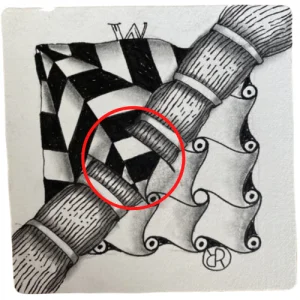
As Molly explains in the Project Pack #21, Day 1 video, “It’s a way to make a tangle to look like it’s tucking through the sheet or the page.” She also demonstrates this technique in the video.
Twelve Days of Zentangle
The Twelve Days of Zentangle is an annual holiday tradition from Zentangle HQ begun in 2013 where Rick and Maria and the HQ crew lead us through twelve consecutive days of tangling together. In 2017 this series was combined with Zentangle’s Project Packs.
Weighting
A tangle enhancing technique where you add ink to a previously drawn stroke to thicken it thus giving it more weight. Other tangle enhancers include Aura, Coffering, Dewdrop, Enthatching, Perfs, Rounding, Shading, and Sparkle.
“Yoga For Your Brain”™
Trademarked phrase owned by CZT Sandy Steen Bartholomew and the title of one of her Zentangle-related books.
A technique – “like a reverse tranzending” – introduced by Molly and Martha on Day 9 of Project Pack 16’s 2021 Twelve Days of Zentangle – Keeping Score. You can find the full video demonstrating this technique on both the Pangea and Mooka pages.
zenAgain
A special CZT-only seminar event held once a year, usually in November.
In Project Pack 16, Day 3, Julie uses CZT Maria Tovar’s Dry Embossing (Inkless Tangling) Technique on a tile. It’s referred to then as zenbossing.
A Zentangle-inspired creation developed by Dutch CZT Marguerite Samama. Marguerite’s tutorial demonstrating how to create zenbuttons is here on TanglePatterns.
A Zendala combines the principles and techniques used to create a Zentangle-inspired piece of art with the principles of creating a mandala. Often used in art therapy, mandalas are said to open the doorway into the symbolic language of the soul and are a meditational art form. For more about the origins of mandalas, see “Mandala – Sacred Geometry in Buddhist Art“.
Some examples of Zendalas can be seen here on TanglePatterns.
Is more fully described on this “What is a Zentangle” page.
Meet the Zentangle Family, from the left: co-founder Maria Thomas, her daughters Martha Huggins and Molly Hollibaugh, and co-founder Rick Roberts. Missing from the photo is Zentangle HQ team member Julie Willand, often “seen” in the Project Pack videos.
In a former life I was a Public Relations Consultant for large corporations and “HQ” was our common language for a company’s headquarters. So when I began TanglePatterns in 2010 it was a natural to use HQ to refer to Zentangle’s headquarters, home base of Zentangle’s founders.
The story behind the Zentangle registered trademarked logo is explained here on their blog.
“We chose the empty square drawn in brush strokes. The traditional square format matched our original square tiles. We liked the idea of the empty square because it suggested that it is up to the individual artist to define what to put on the tile.”
“Zentangle Project Packs are a curated collection of supplies that pair up with an online video tutorial, or series of tutorials, all on the same theme. These packs are numbered and made available for purchase prior to the release of each video in the series. Enjoy the Zentangle tools and tiles as you tangle along with Rick, Maria and others from Zentangle HQ.”
All the Project Pack tutorials are summarized in detail on TanglePatterns and include links to the tutorial videos. You can locate the summaries by going to the TANGLES BY TYPE section in the left sidebar and selecting the term projectpack.
Links to each of the summaries can also be found on the ZENTANGLES > ZENTANGLE PROJECT PACKS tab on the top menu bar of any page on the site.
Zentangle Staff
Meet the Zentangle staff up close and personal in this blog post.
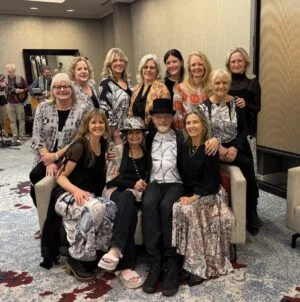
A Zentangle is the form created in black ink on a 3.5 inch (89 mm) tile, with abstract patterns referred to as tangles. Works using these patterns but differing in color, size, shape or surface are ‘Zentangle-inspired Art’ (ZIA).
My playful term for the quirky language used in the Zentangle art form. This includes the Roman Numerals used for numbering the CZT seminars and terms like Orbs and Perfs and Tango, for example. First used here.
The anthology of official Zentangle patterns given to Certified Zentangle Teachers (CZT®) at the completion of their certification program. It contains all the official (aka Zentangle-original) tangles and the step-by-step illustrations for creating them.
From the CZT-only newsletter February 21, 2022:
“A few years into the development of the Zentangle Method™, Rick and Maria wanted to create a way to categorize tangles. They began to design a system that has been honed over the years, to make sense of the study and relationship of tangles. It is not meant to be exact, but rather to be playful and helpful in describing, deconstructing, and understanding the nature and potential of each tangle. Borrowing from the term entomology (the study and classification of insects), we decided that the system in which we study and classify tangles would be called Zentomology™.
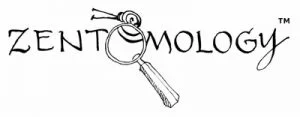
A technique tutorial by CZT Lynn Mead to create ribbons of tangles.
And for the Official Zentangle Glossary of Terms page, visit the Zentangle.com site.
|
.oOo. |
|
Enhance your Zentangle experience while supporting TanglePatterns: |
|
CURRENT EDITION! TanglePatterns.com TANGLE GUIDE, 2025 Edition |
|
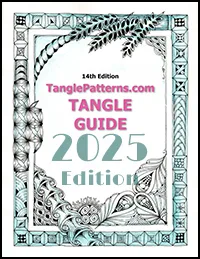 |
The 14th Edition of the TanglePatterns.com TANGLE GUIDE is an instant-download 117-page interactive digital eBook/PDF containing over 2,000 tangles on the site from May 2010 through December 31, 2024. It's a great resource and a must-have digital tool for using the site. Visit the STORE > E-BOOKS page and help keep TanglePatterns.com going by getting your copy now! |
|
"Linda, Thank you! I was relying on too few and getting stuck after 3 years of daily working with Zentangle. This has inspired me to ‘begin again’ with renewed excitement." ~ Barbara R. |
|
| See the BOOK REVIEWS page for more details on its features and view a sample page. Note: this is a digital product you download immediately when you place your order, nothing will be physically mailed to you. | |
| If you're new to Zentangle® and tangling, my TanglePatterns.com BEGINNER'S GUIDE TO ZENTANGLE is just what you need to get started. Also available en Français and en Español. | |
|
|
|
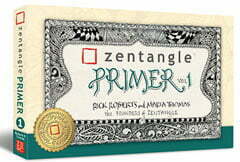 |
This is the only Zentangle book you'll ever need: the fabulous Zentangle PRIMER Vol 1. It's your CZT-in-a-book by the founders of Zentangle®. Visit the STORE tab on the top menu bar or click on the image. For more about the content and to read the rave reviews, visit the BOOK REVIEWS tab. |
| Now available in KINDLE format for $9.99. Spanish Edition here. Japanese Edition here. | |
| "Absolutely the best Zentangle Book yet! As an accomplished artist I used to think I did not need instruction on this art form. How wrong I was! My tangling improved by leaps and bounds after reading this book. If you think you have Zentangle down then you need this book more than ever!" ~ Kris H | |
|
|
|
|
.oOo. |
|

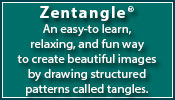
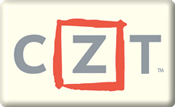

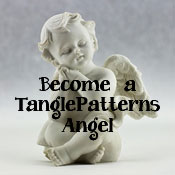

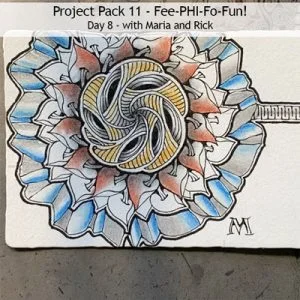
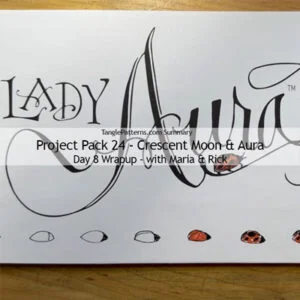
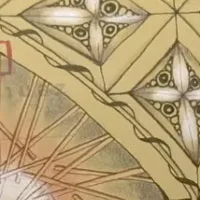
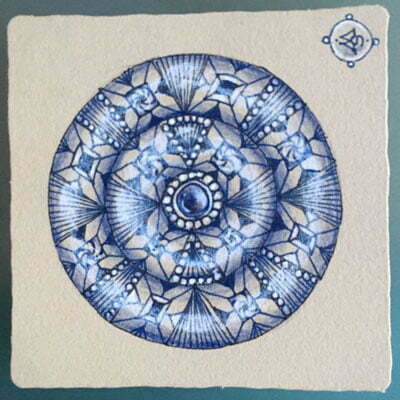
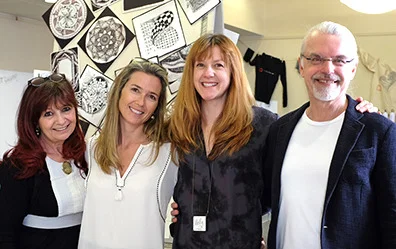
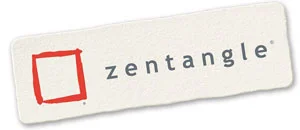

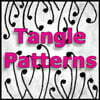
I am sorry. I just read this and realised that I have used zentangle as a verb at more than one place…without knowing that I was doing a blunder. I’ll try not to do that again ann I’ll try to change it wherever possible.
ZIA as a term, for Zentangle Inspired Art. I wanted to share what the “Zia” symbol means, and it is a very nice tie in to Zentangle as an art. Very Zen in and of itself, term and abbreviation!
The Zia Sun Symbol
The Zia Sun Symbol is featured on the New Mexico flag.
The Zia Indians of New Mexico regard the Sun as a sacred symbol. Their symbol, a red circle with groups of rays pointing in four directions, is painted on ceremonial vases, drawn on the ground around campfires, and used to introduce newborns to the Sun. Four is the sacred number of the Zia and can be found repeated in the four points radiating from the circle. The number four is embodied in:
the four points of the compass (north, south, east, and west);
the four seasons of the year (spring, summer, autumn and winter);
the four periods of each day (morning, noon, evening and night);
the four seasons of life (childhood, youth, middle years and old age);
and
the four sacred obligations one must develop (a strong body, a clear mind, a pure spirit, and a devotion to the welfare of others), according to the Zia’s belief.
The symbol is featured on the Flag of New Mexico and in the design of both the New Mexico State Capitol and New Mexico’s State Quarter entry as well as the state highway marker. But given its history, the pueblo would like
people to first request permission before using it.
You have mentioned in your article “A Pattern is not Always a Tangle”, and I have seen the same thing other places, including zentangle.com, that there are to be no gridlines or pencil guides when drawing a tangle. Yet, I see many of the independently developed tangles that begin with a pencil grid. I am playing around with a few designs of my own and was just curious about that inconsistency. Thanks!
Regardless of what a pattern has been labeled, the “independently developed tangles that begin with a pencil grid” you’ve seen are NOT tangles.
That’s it. No inconsistency in the guidelines but unfortunately lots of “operator error”.
Lots of good information. I did not know all this. Thanks Betty
dear linda, we know a zentangle is created on a white tile, with a black pen and pencil. am i creating a zentangle when i tangle on a black tile? renaissance…on a bijou….opus…. zendala? ore are those ZIA’s?…. or we call each with the specific name, because they are nt zentangles neither ZIAs.
greetings, tina-akua
Hi Tina, I’ve noticed that Rick and Maria use the term Zentangle art. So that’s what I’d go with.
I am learning quite a bit of history while I visit the sight looking at the lovely tangles. the terms are marvelous.
HAPPY BIRTHDAY TANGLE PATTERNS!!!…….LINDA, THANK YOU FOR THIS AMAZING SITE!
Fragments (Seeds), Reticula (Grids), TranZending … new words in the Zentangle lexicon are always being added to this ZENTANGLES > ZENTANGLE TERMINOLOGY page. Great links to helpful tutorials too. Be sure to check it out! 🙂
What is the word for going behind other parts of a pattern??
I’m guessing you;re asking about “drawing behind” this is the concept and term taught with the tangle Hollibaugh. Easy, right? 🙂
Thank you so much for this wonderful “zentangle dictionary”. I have been trying to start a group of new tanglers in a retirement community, and this dictionary of terms will help tremendously.